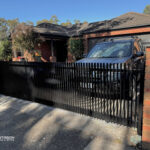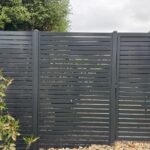A well-designed fence and gate system is an essential component of any residential property. It not only defines the boundaries of your home but also contributes significantly to its overall look and feel. Among the various materials available for fencing and gates, timber stands out as a timeless and versatile choice. Its natural warmth and beauty can complement any architectural style, from traditional cottages to modern urban homes.
In this article, we will examine the multitude of benefits that timber fencing and gates offer, helping you make an informed decision for your home’s exterior. Whether you are building a new home or renovating your existing property, understanding the advantages of timber can guide you towards creating a functional, beautiful, and sustainable outdoor space.
1. Aesthetic Appeal
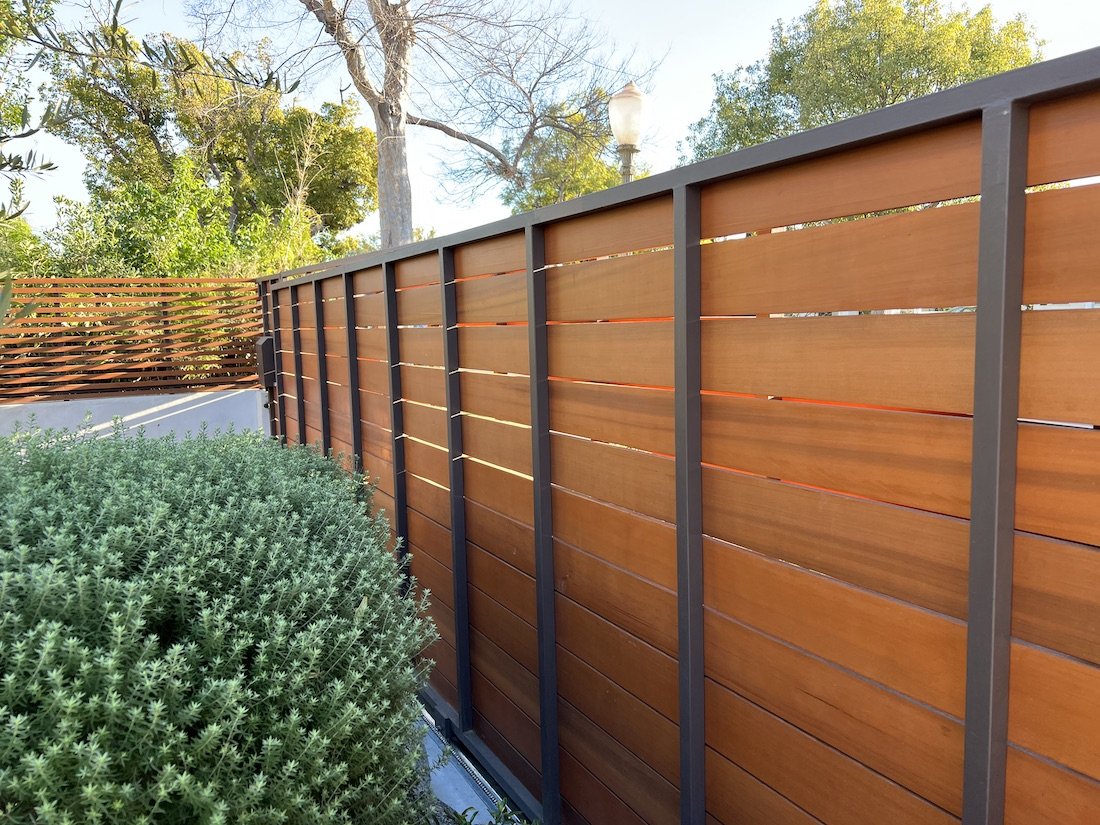
One of the most compelling reasons to choose timber fencing and gates is their undeniable aesthetic appeal. Timber exudes a natural warmth and charm that is difficult to replicate with other materials. Here’s how timber enhances the visual appeal of your home:
Natural Beauty
Timber possesses a unique grain and texture that adds depth and character to any setting. The rich hues and organic patterns found in different wood species can create a visually pleasing and inviting atmosphere. Whether you prefer the light tones of pine or the deep, rich colors of mahogany, there is a timber option to suit every taste.
Read more: Top 10 Wonderful Timber Fence Colors For 2025
Blend with Nature
Timber fences and gates seamlessly integrate with natural surroundings, making them an excellent choice for gardens and landscapes. They complement greenery and floral arrangements, enhancing the overall beauty of your outdoor space. This harmonious blend with nature creates a serene and peaceful environment around your home.
Variety of Styles
Timber allows for a wide range of design possibilities. From classic picket fences to contemporary horizontal slat designs, timber can be crafted into various styles that match your home’s architecture. You can also choose from different finishes, such as staining or painting, to achieve the desired look and feel.
Enhancing Curb Appeal
A well-crafted timber fence and gate can significantly boost your home’s curb appeal. It serves as the first impression for visitors and potential buyers, adding value and attractiveness to your property. A beautiful timber fence can make your home stand out in the neighborhood and reflect your personal style and attention to detail.
2. Durability and Strength

Contrary to common misconceptions, timber fences and gates are not only aesthetically pleasing but also highly durable and robust. With proper selection and maintenance, timber can withstand various environmental conditions and last for many years. Here’s why timber is a durable choice:
Quality of Wood
The durability of a timber fence largely depends on the type of wood used. Hardwoods like oak, cedar, and redwood are known for their strength and resistance to decay and insect infestation. These woods have natural oils and tannins that act as preservatives, enhancing their longevity even in harsh weather conditions.
Treatment and Preservation
Modern wood treatment techniques have significantly improved the lifespan of timber fencing and gates. Pressure-treated timber is infused with preservatives that protect against rot, fungi, and insect damage. This treatment makes the wood more resilient and extends its service life, ensuring that your fence remains sturdy and attractive over time.
Resistance to Weather Elements
Timber fences can be designed to resist various weather elements, including rain, wind, and sunlight. By applying suitable finishes such as sealants, stains, or paints, you can protect the wood from moisture penetration and UV damage. This protection helps prevent issues like warping, cracking, and fading, maintaining the fence’s structural integrity and appearance.
Structural Strength
Timber’s inherent strength makes it an excellent material for fencing and gates that need to provide security and withstand external forces. Properly constructed timber fences can handle impacts and resist bending or breaking under pressure. This strength ensures that your fence remains functional and secure for many years.
3. Versatility and Customization
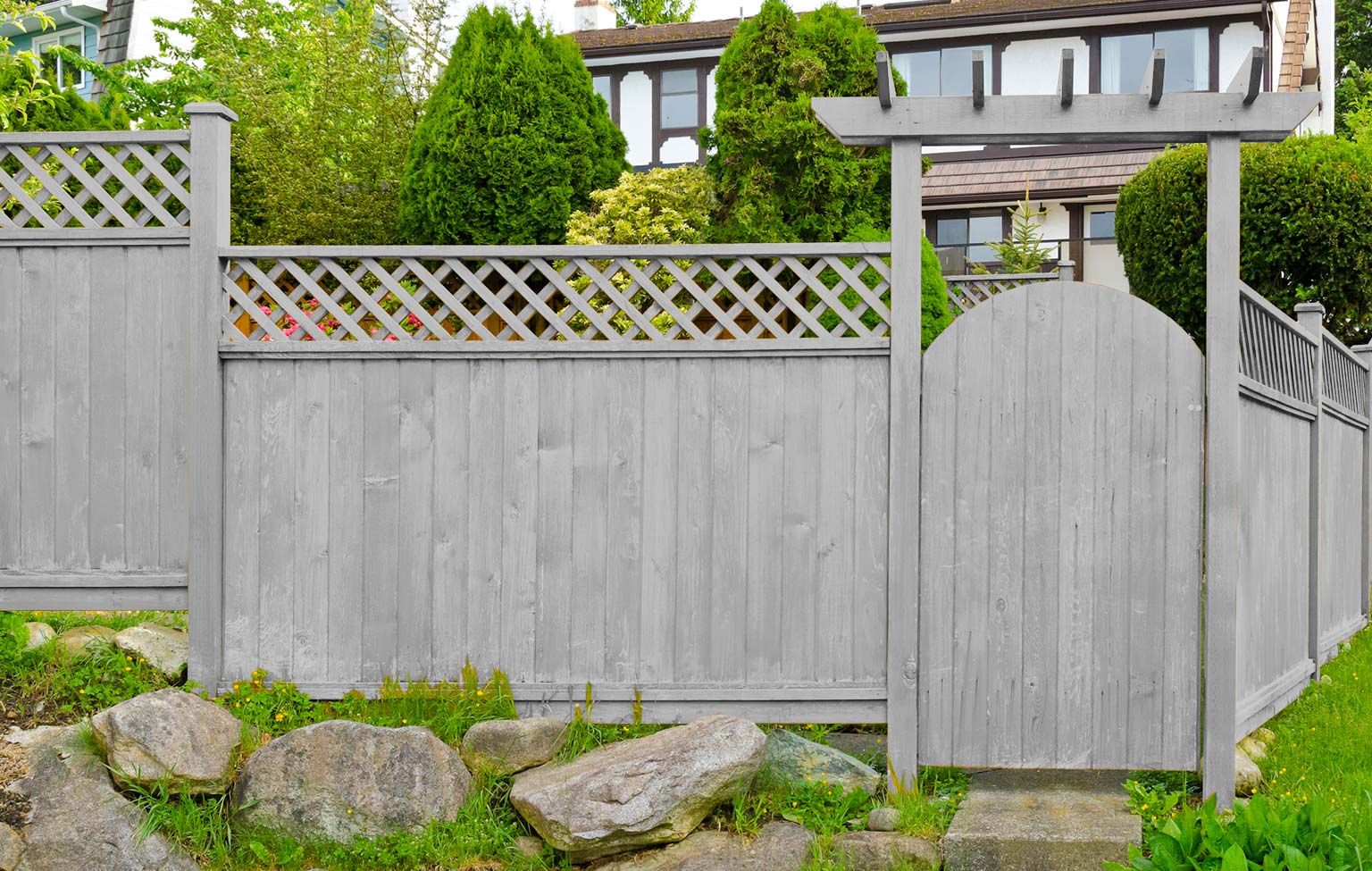
Timber’s versatility is unmatched when it comes to creating customized fencing and gate solutions. It offers flexibility in design, allowing you to tailor your fence to your specific needs and preferences. Here’s how timber excels in versatility:
Adaptable Designs
Timber can be easily cut, shaped, and assembled into various designs and configurations. Whether you desire a tall privacy fence, a decorative garden fence, or a sturdy security gate, timber can be adapted to meet your requirements. This adaptability allows you to create unique and personalized solutions that complement your property’s style and function.
Range of Sizes and Shapes
With timber, you can choose from a variety of sizes and shapes to suit different applications. Boards, panels, and posts can be customized to specific dimensions, enabling precise fitting and alignment. This customization ensures that your fence and gates integrate seamlessly with existing structures and landscapes.
Compatibility with Other Materials
Timber can be combined with other materials like metal, stone, or glass to create innovative and aesthetically pleasing designs. For example, incorporating metal accents or stone pillars into a timber fence can enhance its visual appeal and add structural strength. This compatibility offers endless possibilities for creative and functional fencing solutions.
Ease of Modification
If you wish to modify or expand your fence in the future, timber makes the process straightforward. Additional sections can be added, or existing ones can be altered without significant difficulty. This flexibility is particularly beneficial for homeowners who anticipate changes in their property’s layout or functionality over time.
Read more: Top 7 Timber Fence Ideas for Inspiration
4. Cost-Effectiveness

Investing in timber fencing and gates can be a cost-effective decision, providing excellent value for money over the long term. Here’s why timber is an economical choice:
Affordable Material
Compared to other fencing materials like wrought iron or vinyl, timber is generally more affordable. The wide availability of different wood species allows you to select options that fit within your budget without compromising on quality or appearance.
Lower Installation Costs
Timber fences are relatively easy to install, which can reduce labor costs. Skilled DIY enthusiasts may even choose to undertake the installation themselves, further saving on expenses. The simplicity of working with wood means that installation times are shorter, minimizing disruption to your property.
Longevity and Durability
As discussed earlier, timber fences can last for many years with proper care and maintenance. This longevity translates to fewer replacements and repairs over time, providing long-term savings. The initial investment in quality timber and treatment pays off by reducing future maintenance costs.
Energy Efficiency
Timber is a natural insulator, helping to moderate temperatures around your home. A well-constructed timber fence can provide shade and windbreaks, reducing the need for heating and cooling inside your home. This energy efficiency can lead to lower utility bills over time.
Increase in Property Value
A beautiful and well-maintained timber fence can enhance your property’s value, making it more attractive to potential buyers. This increase in property value can provide a significant return on investment should you decide to sell your home in the future.
5. Environmental Sustainability

In today’s world, environmental considerations are more important than ever. Timber fencing and gates offer several eco-friendly benefits that make them a responsible choice for environmentally conscious homeowners:
Renewable Resource
Wood is a renewable resource when sourced responsibly from well-managed forests. Sustainable forestry practices ensure that trees are replanted and forests are preserved for future generations. Choosing timber from certified sources supports these sustainable practices and reduces environmental impact.
Carbon Sequestration
Trees absorb carbon dioxide from the atmosphere and store it within their fibers. Using timber for fencing and gates continues this carbon storage, helping to mitigate greenhouse gas levels. This property makes timber a more environmentally friendly option compared to materials like steel or plastic, which require significant energy to produce.
Biodegradability
At the end of its life cycle, timber is biodegradable and can decompose naturally without harming the environment. This contrasts with synthetic materials that may persist in landfills for centuries. Timber’s biodegradability contributes to reduced waste and a smaller ecological footprint.
Energy Efficiency in Production
Producing timber products generally requires less energy compared to manufacturing metal or plastic alternatives. This lower energy consumption results in reduced carbon emissions and a smaller environmental impact during the production process.
Support for Local Economies
Sourcing timber locally supports local forestry industries and reduces the carbon footprint associated with transportation. Supporting local businesses also contributes to economic sustainability and community development.
6. Enhanced Privacy and Security
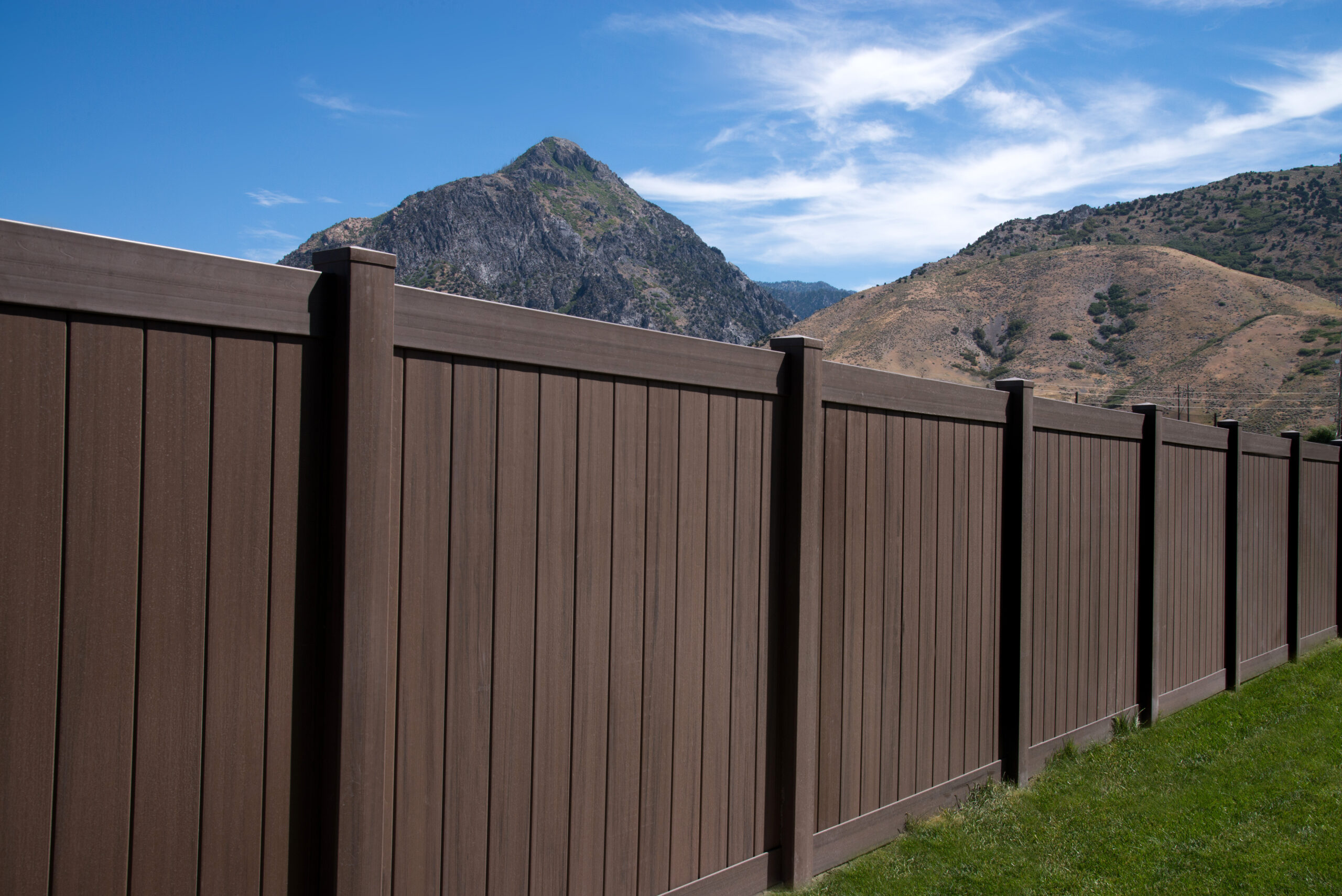
A primary function of fencing and gates is to provide privacy and security for your home. Timber excels in fulfilling these roles effectively:
Effective Privacy Barrier
Timber fences can be constructed to various heights and designs that effectively block the view into your property. Solid panel designs prevent outsiders from seeing into your yard, allowing you to enjoy your outdoor spaces without intrusion. This privacy is essential for creating a comfortable and secure home environment.
Sound Insulation
Wood has natural sound-absorbing properties that can help reduce noise pollution from busy streets or neighboring properties. A well-built timber fence acts as a barrier to unwanted sounds, enhancing the tranquility and comfort of your home.
Physical Security
A sturdy timber fence and gate system serves as a physical deterrent to intruders and trespassers. The robust construction makes it difficult for unauthorized individuals to access your property, enhancing the safety of your home and family. Features like lockable gates and tall fence panels further increase security measures.
Safety for Children and Pets
Timber fences provide a secure enclosure for children and pets to play safely outdoors. The solid structure prevents them from wandering off and protects them from external hazards. This security allows for peace of mind while enjoying your outdoor spaces.
Controlled Access
Installing timber gates allows you to control access to your property effectively. You can choose from various gate designs, including automated options, to manage entry and exit points efficiently. This control enhances security and adds convenience to your daily routines.
7. Easy Maintenance and Repair
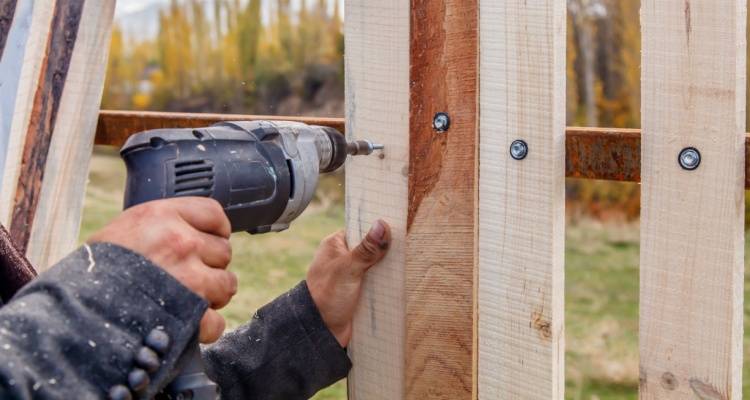
Maintaining and repairing timber fencing and gates is a straightforward process, ensuring that they remain functional and attractive with minimal effort:
Simple Cleaning
Regular cleaning of timber fences involves simple procedures like washing with water and mild detergents to remove dirt and mildew. This ease of cleaning helps maintain the fence’s appearance and prevents deterioration over time.
Easy Repairs
In the event of damage, timber fences are relatively easy to repair. Individual boards or sections can be replaced without the need to dismantle the entire fence. This ease of repair reduces downtime and costs associated with maintenance.
Re-staining and Painting
Over time, re-staining or repainting your timber fence can restore its original beauty and provide continued protection against the elements. This process is straightforward and can often be completed as a DIY project, allowing you to refresh your fence’s appearance whenever desired.
Pest Control
While certain wood species are naturally resistant to pests, regular inspections and treatments can effectively manage and prevent infestations. Applying appropriate preservatives and keeping the fence clean and dry are simple measures that protect against common wood pests like termites.
Longevity Through Care
By adhering to a regular maintenance schedule, you can significantly extend the lifespan of your timber fence and gates. Routine care helps identify and address minor issues before they escalate into major problems, ensuring that your fencing system remains robust and attractive for many years.
Things to Consider When Choosing Timber Fencing & Gates

While timber fencing and gates offer numerous benefits, it’s important to consider some potential drawbacks as well. Understanding these cons will help you make a more informed decision when choosing the best fencing solution for your home.
1. Maintenance Requirements
One of the primary disadvantages of timber fencing and gates is the ongoing maintenance required to keep them in good condition. Unlike materials like vinyl or metal, timber is susceptible to weathering, which can lead to issues such as:
- Rotting: Prolonged exposure to moisture can cause timber to rot, particularly in humid or rainy climates. Regular treatments and sealants are necessary to protect the wood from moisture penetration.
- Warping and Cracking: Changes in temperature and humidity can cause timber to expand and contract, leading to warping or cracking over time. This can affect the structural integrity and appearance of the fence.
- Fading: Timber fences that are exposed to direct sunlight can fade over time, losing their original color and appeal. Re-staining or painting is required to maintain the fence’s aesthetic appeal.
2. Vulnerability to Pests
Timber is a natural material that can be attractive to pests such as termites, carpenter ants, and wood-boring beetles. If not properly treated and maintained, timber fences and gates can become infested, leading to significant damage. Preventative measures like using pressure-treated wood and applying insecticides are necessary to protect against pest infestations.
3. Limited Lifespan Compared to Other Materials
While timber fences can last for many years with proper care, they generally have a shorter lifespan compared to materials like vinyl, aluminum, or wrought iron. The natural wear and tear on timber, combined with its susceptibility to rot and pests, means that timber fences may need to be replaced sooner than fences made from more durable materials.
4. Initial and Ongoing Costs
Although timber can be a cost-effective material, particularly in comparison to high-end options like wrought iron, the initial cost of high-quality timber and the ongoing maintenance expenses can add up over time. Homeowners must consider the long-term financial commitment required to keep timber fences and gates in optimal condition. This includes costs for treatments, repairs, and possible replacements.
5. Susceptibility to Weather Damage
Timber fences and gates are more prone to weather-related damage than some other materials. Harsh weather conditions, such as heavy rain, snow, strong winds, and extreme heat, can deteriorate the wood more quickly, leading to issues like:
- Splitting and Cracking: Exposure to freezing and thawing cycles can cause the wood to split or crack, reducing its structural integrity.
- Water Damage: Prolonged exposure to water can lead to swelling, warping, and eventual decay if the wood is not adequately protected.
- Wind Damage: Strong winds can put pressure on timber fences, particularly taller structures, leading to potential breakage or instability.
6. Environmental Impact of Treatment Chemicals
While timber is often promoted as an environmentally friendly material, the treatments required to preserve it can have negative environmental impacts. Many wood preservatives and insecticides contain chemicals that can leach into the soil and water, potentially harming local ecosystems. Additionally, the production and application of these chemicals can contribute to pollution and resource depletion.
7. Fire Risk
In areas prone to wildfires, timber fencing and gates pose a higher fire risk compared to non-combustible materials like metal or concrete. Wood is a flammable material, and a timber fence can quickly become a fire hazard if not properly treated with fire-resistant coatings. Homeowners in fire-prone regions should carefully consider the potential risks and take appropriate precautions, such as using fire-resistant wood species or applying fire-retardant treatments.
Read more: 10 Factors to Consider When Choosing Timber Fencing
Conclusion
Choosing to install timber fencing and gates for your home is a decision that offers numerous benefits, from enhancing aesthetic appeal and providing robust security to offering environmental sustainability and cost-effectiveness. Timber’s natural beauty and versatility allow for personalized designs that complement any architectural style, while its durability ensures that your investment stands the test of time.
By selecting quality wood, applying proper treatments, and performing regular maintenance, you can enjoy the long-lasting beauty and functionality of timber fencing and gates. Moreover, by choosing timber, you are making an environmentally responsible choice that supports sustainable practices and contributes to a healthier planet.


